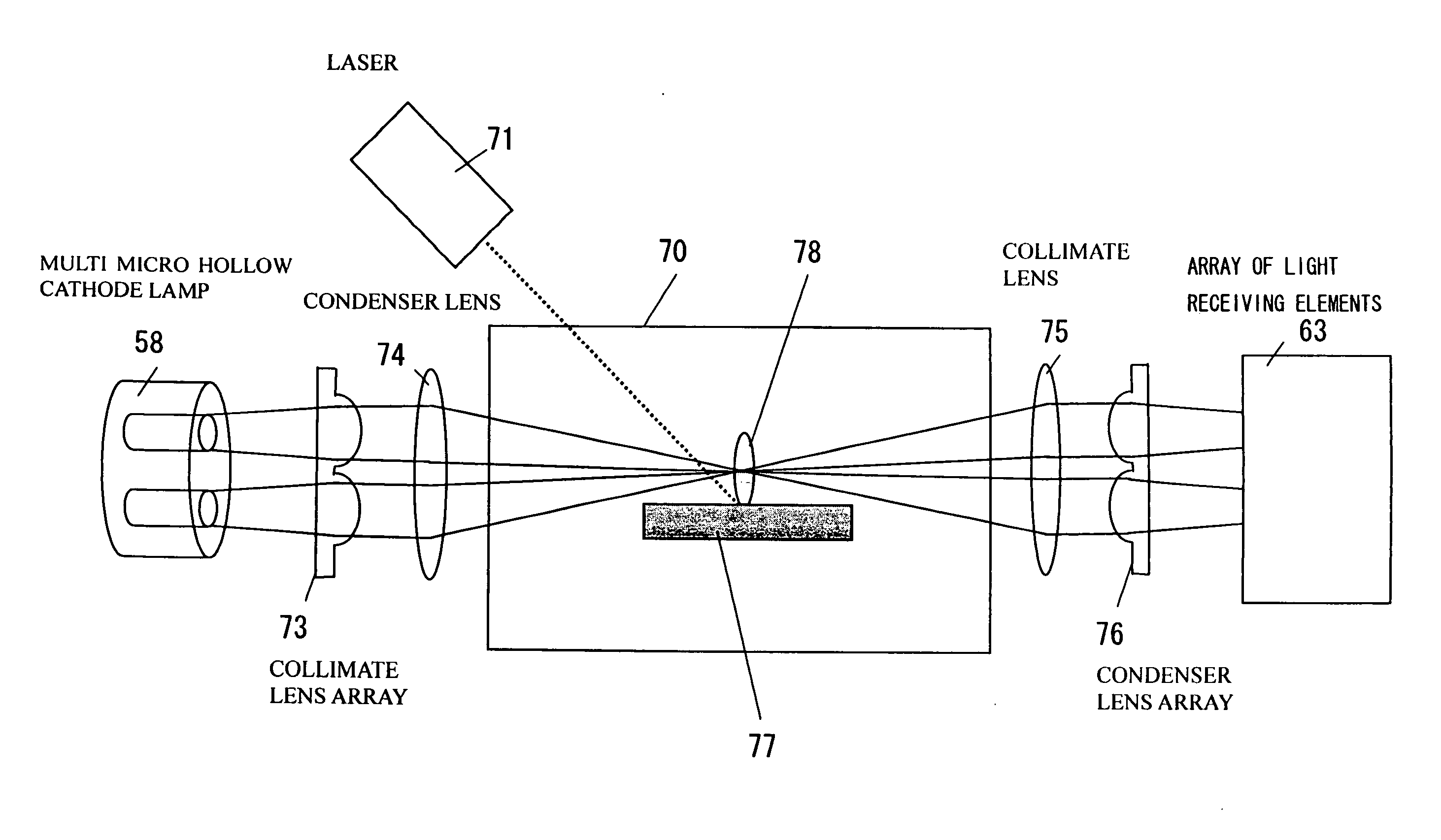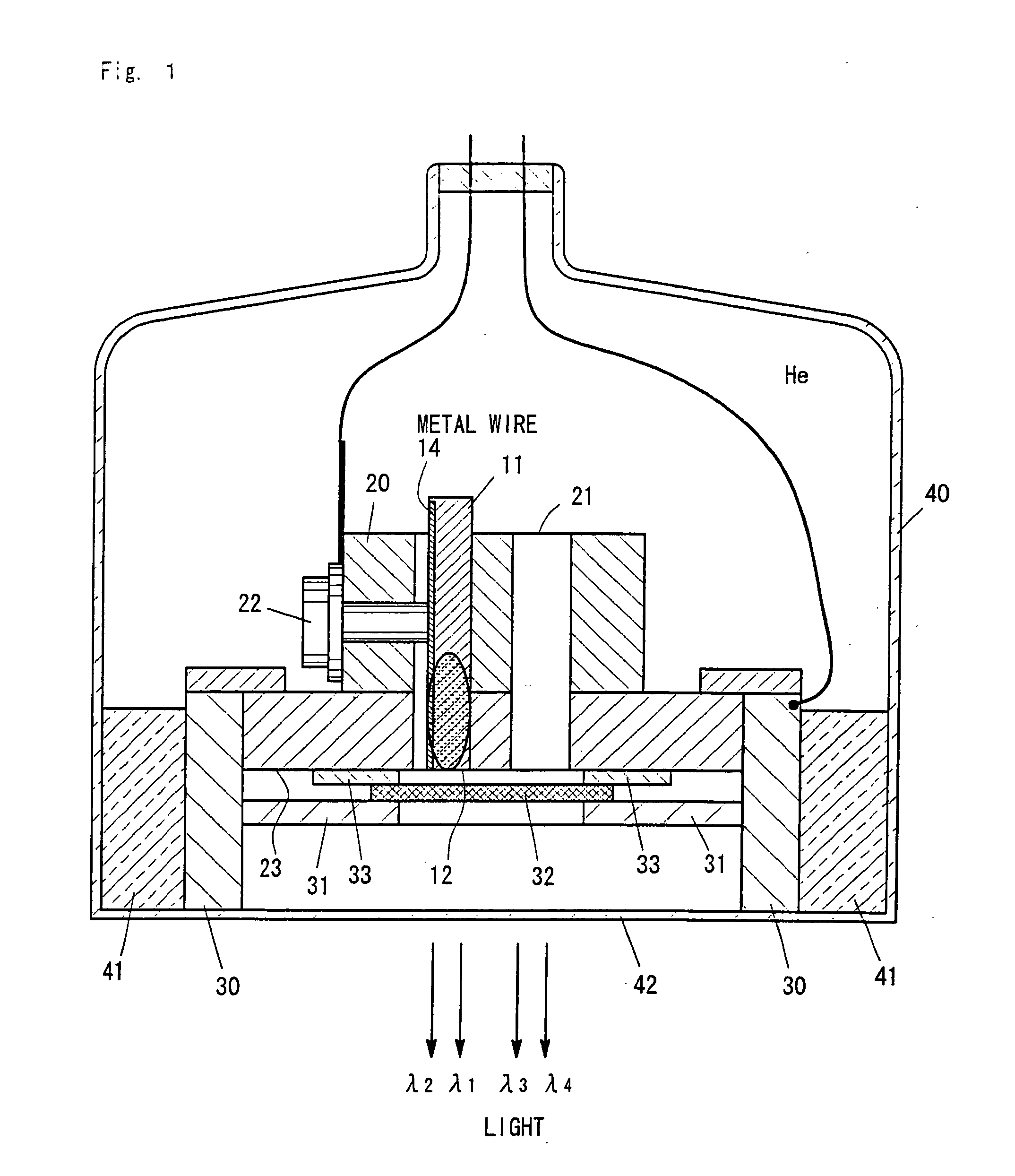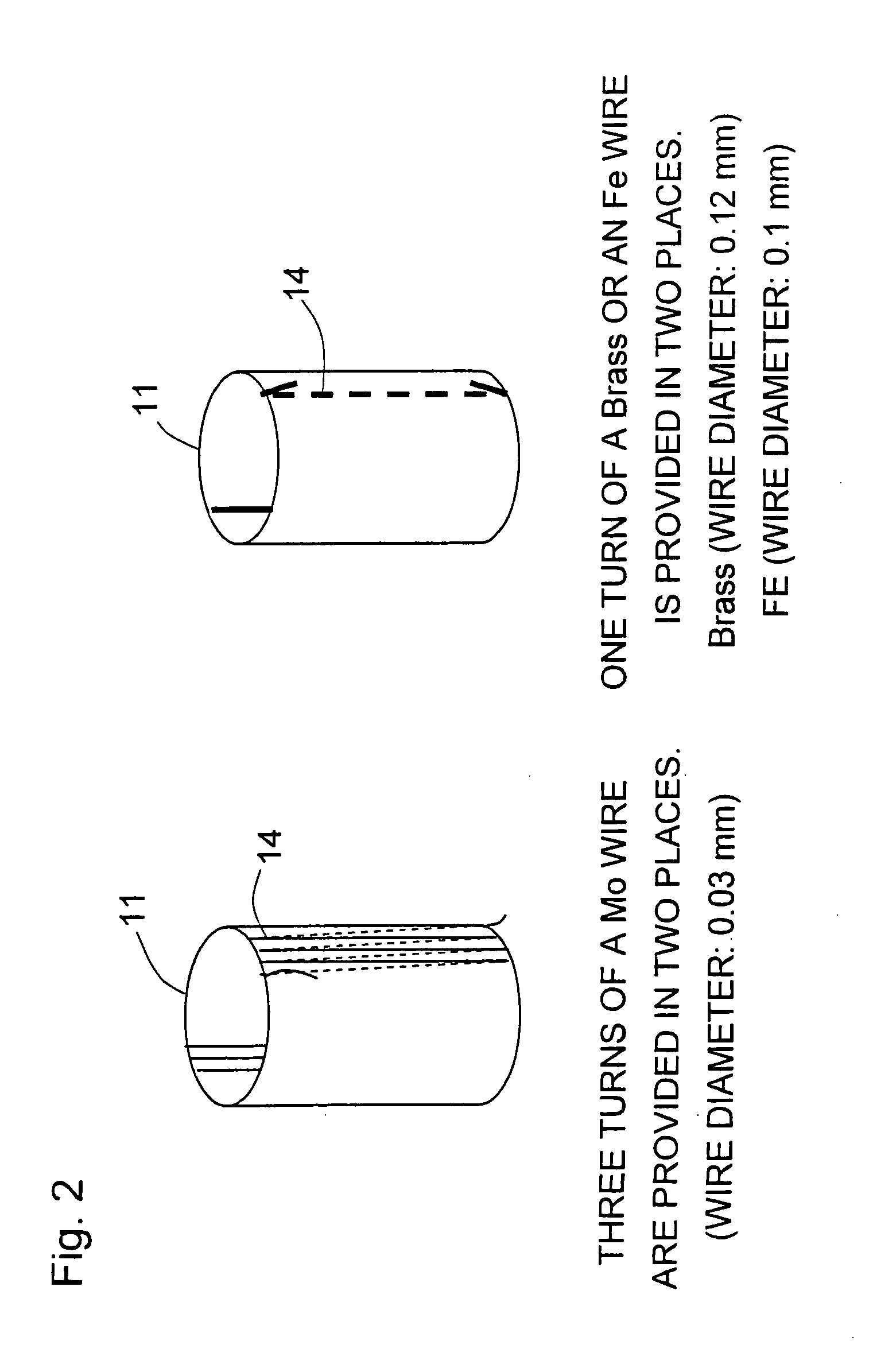Multi Micro-Hollow Cathode Light Source and Multi-Atomic Simulataneous Absorption Spectrum Analyzer
a multi-atomic simulataneous absorption spectrum and light source technology, applied in the direction of optical radiation measurement, instruments, spectrometry/spectrophotometry/monochromators, etc., can solve the problem of tube not providing the sputtering phenomenon sufficient to cause the cathode to emit light, and the apparatus is desirably small and portable, etc. problem, to achieve the effect of increasing the number of plasma ions being generated, reducing power consumption, and high density
- Summary
- Abstract
- Description
- Claims
- Application Information
AI Technical Summary
Benefits of technology
Problems solved by technology
Method used
Image
Examples
example 1
[0058]FIG. 1 is a side view showing the configuration of the present device. Micro hollow pipes 11 are made of copper and have an outer diameter of 1 mm, an inner diameter of 0.85 mm, and a length of 20 mm. Four micro hollow pipes are used in EXAMPLE 1. A cathode holder 20, which is made of synthetic quartz and has insulation properties, has holes 21 located at four places. The four micro hollow pipes 11 are inserted into the holes 21 and fastened with screws 22 to the cathode holder 20. The micro hollow pipes 11 are placed such that the end faces of openings 12 of the micro hollow pipes 11 are coplanar with the end face of the cathode holder 20. An anode mesh 32 is provided on a planar portion 31 of an anode holder 30, which is made of metal. An insulating spacer 33, which is a ring-shaped member made of ceramic, is disposed between the anode mesh 32 and an end face 23 of the cathode holder 20. The distance between the anode mesh 32 and the openings 12 of the micro hollow pipes 11 ...
example 2
[0085]An anode plate and a cathode plate are arranged with an insulating plate therebetween in EXAMPLE 2. Referring to FIG. 18, a cathode plate 51, an insulating plate 62, and an anode plate 60 are stacked. The cathode plate 51 is a circular plate with a diameter of 30 mm and a thickness of 1 mm, and made of copper. The insulating plate 62 is a circular plate with a diameter of 40 mm and a thickness of 0.3 mm. The anode plate 60 is a circular plate with a diameter of 30 mm and a thickness of 1 mm, and made of copper. The laminate has holes 52 at four places. Referring to FIG. 19, an In plate 55, an Fe plate 56, and a Mo plate are provided at three out of four openings 53 of the holes 52 in the cathode plate 51 such that the holes of the plates 55, 56, and 57 are concentric with the holes 52. Each of the metal plates has a thickness of 300 μm.
[0086]The laminate is provided on the holder 31 shown in FIG. 1. However, in EXAMPLE 2, the holder 31 in FIG. 1 is a cathode holder and the cat...
example 3
[0089]EXAMPLE 3 shows an example of a simultaneous multielement atomic absorption spectrometer that performs simultaneous multielement atomic absorption spectrometry with a multi micro hollow cathode light source. Referring to FIG. 20, beams from elements forming emission sources were collimated with a collimate lens 59, which faced a multi micro hollow cathode light source 58. The beams were then passed through plasma 61, which was to be measured, in a sputtering device 60. Cu and Mo were used as sputtering targets in the sputtering device 60. Plasma simultaneously containing Cu and Mo was generated in the sputtering device 60. The collimated beams that were from the light source and passed through the plasma were condensed on an array 63 of light receiving elements with a condenser lens 62.
[0090]FIG. 21 shows results of simultaneously measuring absorption ratios of Cu and Mo, with the optical system, in plasma generated by simultaneously sputtering Cu and Mo in which electric powe...
PUM
| Property | Measurement | Unit |
|---|---|---|
| diameter | aaaaa | aaaaa |
| hollow diameter | aaaaa | aaaaa |
| inner diameter | aaaaa | aaaaa |
Abstract
Description
Claims
Application Information
 Login to View More
Login to View More - R&D
- Intellectual Property
- Life Sciences
- Materials
- Tech Scout
- Unparalleled Data Quality
- Higher Quality Content
- 60% Fewer Hallucinations
Browse by: Latest US Patents, China's latest patents, Technical Efficacy Thesaurus, Application Domain, Technology Topic, Popular Technical Reports.
© 2025 PatSnap. All rights reserved.Legal|Privacy policy|Modern Slavery Act Transparency Statement|Sitemap|About US| Contact US: help@patsnap.com



